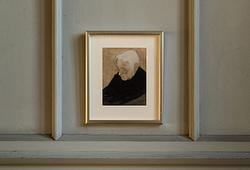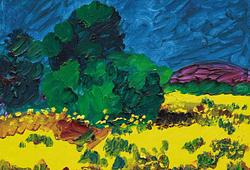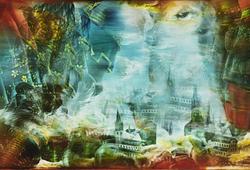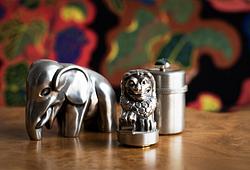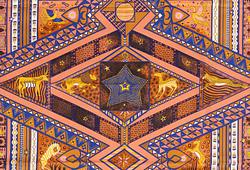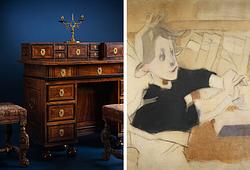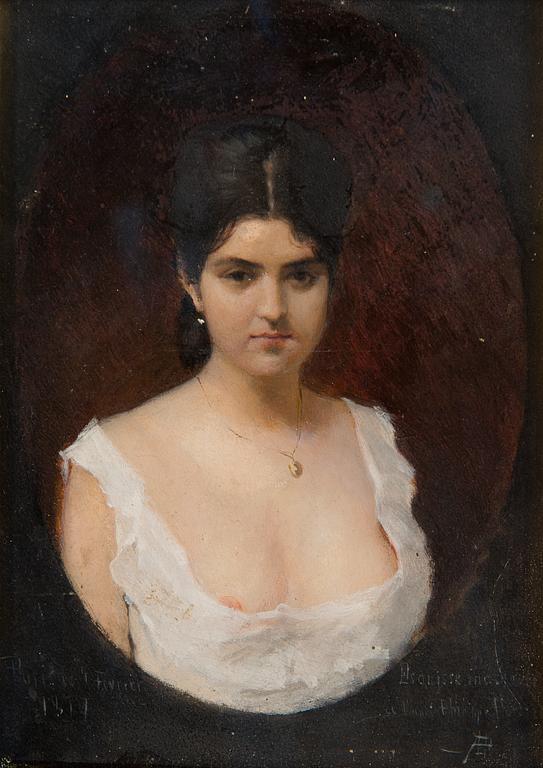Albert Edelfelt
Albert Edelfelt, "Model study for Queen Blanca".
Monogram signed. Marked 'Paris le 7 Février 1877' and dedicated; Esquisse inachevée à l’ami Filippe F'. Oil on panel, 21.5x16 cm.
Wear due to age and use.
Provenance
Donated by the artist to later professor Filip Forstén; by descent within the same family.
Exhibitions
"Karjalas utställningar av konstverk i privat ägo", Vyborg 1931, no. 48.
"Edelfelt in Paris," Turku Art Museum 6.5.-16.9.2001 and Tikanoja Art Museum, Vaasa 28.9.-25.11.2001, no. 9.
Literature
Bertel Hintze, "Albert Edelfelt", Helsinki 1942, no. 84.
Marina Catani, "Edelfelt in Paris", Turku Art Museum 2001, described and illustrated on pp. 122-123.
Tuulikki Kilpinen, "Modulation sur la toile: La Reine Blanche d’Albert Edelfelt (1854-1905)", Histoire de l’art no. 50, June 2002, p. 70.
Marina Catani, "Drottning Blanca – Iscensatt av Albert Edelfelt i Quartier Latin i Paris 1877", Finskt Museum 2016, p. 80.
More information
Queen Blanka is one of Finland's most beloved paintings. Albert Edelfelt painted it in Paris in his studio at 24 rue Bonaparte in the Latin Quarter and exhibited it as his debut painting at the Salon, the same year he finished his art studies. The main theme of the painting is maternal happiness, and the semi-historical genre painting was inspired by the nursery rhyme 'Rida ranka' published by Zacharis Topelius in 'Läsning för barn' (Reading for Children), published in Helsinki in 1872.
It is based on the legend of Queen Blanche of Namur (1320-1362), born in a province in central Belgium, and her husband, the Swedish-Norwegian Union King Magnus Eriksson (1316-1374). Of the couple's two sons, the younger son Håkan married Margaretha, who was Valdemar Atterdag's daughter from Denmark. In Topelius' saga, Queen Blanka makes marriage plans for her young son, who would one day rule the entire Nordic region through marriage.
In the summer of 1872, Edelfelt had admired a portrait of Queen Blanka at Gripsholm Castle, painted by an unknown artist. He recounted this in an interview in Hufvudstadsbladet in 1903. With this in mind, he painted the study now for sale in Paris. It bears a striking resemblance to the portrait in Gripsholm. The model has dark hair parted in the middle, dressed in white linen and painted within an oval on the square base. The Gripsholm painting is composed in the same way, except that she wears a crown and sceptre.
Edelfelt used this model as a figure model for the mother and later replaced her face with another model that was fair-haired. He had studied Viollet-le-Duc's recent study of 14th-century clothing and furniture, among other things, and concluded that most medieval beauties were blonde. In total, Edelfelt painted two models and a large mannequin. This first model, with her ample bosom showing one nipple, was in his studio when the Swedish artist George Pauli visited. At first Edelfelt had no suitable costumes for the model. Later he constructed a simple silk dress, which was only attached at the seams with pins. About the visit to Edelfelt's studio Pauli writes the following;
"I wonder what Edelfelt's mother would have said if she had seen her son's ‘Parisian's’ simple lodgings /.../ Edelfelt was busy with studies for his first salon painting ‘Queen Blanka’. Here and there various drafts and several different drawings, some of them after a nude model in the same position as Blanka".
The work is dedicated to the opera singer Filip Forstén (1852-1932), who belonged to Edelfelt's circle of friends in Paris during his studies at the Conservatory from 1874 to 1877. Forstén was later appointed professor and served at the Vienna Opera.
Marina Catani
Artist
Albert Edelfelt is considered one of Finland's greatest artists of the 19th century. After studying in Antwerp and Paris, he settled in France, where he received several exhibition medals and was honored with the Legion of Honour, notably for the famous portrait of Pasteur. He was also summoned by Alexander III to St. Petersburg to portray the Tsar's children. Edelfelt often returned to themes from Finnish history, such as his illustrations for 'The Tales of Ensign Stål.'
Edelfelt's works display an artistic breadth that ranges from everyday life in the Finnish archipelago to prestigious society portraits and historical paintings. In his depictions of everyday life, he managed to merge traditional academic painting with the new techniques of plein air painting, which achieved great success in France. The painting 'The Funeral of a Child' was awarded a third-class medal at the annual Salon in Paris in 1880, marking the most significant international success for Finnish painting at the time.
Albert Edelfelt is primarily represented in Ateneum in Helsinki, but also in the National Museum in Stockholm, as well as museums in Copenhagen, Luxembourg, and Paris.
Read more



